
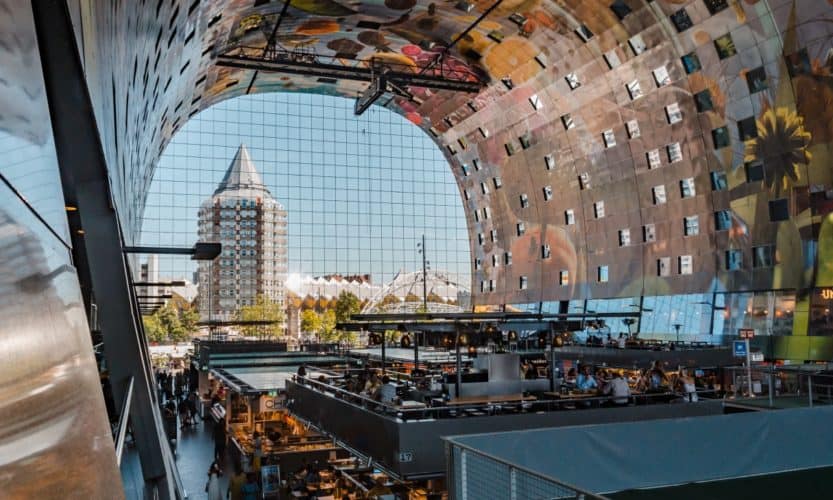
Discover everything the Rotterdam food scene has to offer, from cheap coffee shops to trendy vegetarian restaurants. These are our favourite places to eat in Rotterdam.
Nicknamed ‘Gateway to the World’ thanks to its extensive public transport system, Rotterdam has internationally-inspired eateries sprawled all across town. With plenty of new Rotterdam restaurants and bars opening their doors every day, there has never been a better time to eat out.
In this article, you’ll find well-established institutions and new kids on the block alike. This is the ultimate foodie guide to Rotterdam.
If you’re wondering about my favourite places to eat and drink in Rotterdam, check out the embedded map below (or click the link if the map isn’t showing)
Why don’t you start your journey to Rotterdam by watching my travel video?
Skip ahead with the following links:
Bertmans is a breakfast restaurant in Rotterdam where you can go for a reliable meal at the start of your adventure-filled day.
Bertmans serves both sweet and savoury dishes, with plenty of vegetarian, vegan and gluten-free options for you to choose from.
My personal recommendation: French toast with an iced latte.
Baker & Moore was founded by Paul & Eline, who had always dreamed about starting something and decided to pursue their dream after a round-the-world trip.
At Baker & Moore, you’re in charge. You can assemble a sandwich, salad or yoghurt bowl the way you want to, using their #CreateItYourself formula.
You can come here for all-day breakfast, lunch, or just a drink.
What’s in a name, right? At Bagels & Beans, you can find great bagels, salads, coffee and other drinks at reasonable prices.
Don’t let the fact that this is a chain scare you away. After all, there must be a reason for the company’s success, right?
In the case of B&B, the success is in its simplicity and its accessibility: you can practically find a franchise around every corner in major Dutch cities.
Harvest Coffee Brewers is a place where good food, good coffee and good service come together.
Both founders worked in the Melbourne hospitality industry, where your ability to prepare a great cup of coffee can make or break your reputation. In other words, they know what they’re doing.
At Harvest, they share their Melbourne experiences with the people of Rotterdam, so you may as well enjoy it.
One of my favourite places to get coffee in Rotterdam was Coffeecompany.
If you’re looking for a Starbucks-like coffee chain that’s not Starbucks, Coffeecompany is the place to go for you.
Visiting this place was a part of our morning routine of getting coffee, orange juice and pastries and eating them in our hotel room, and I would highly recommend it.
People with eagle eyes will notice that this is the second time I’m mentioning Baker & Moore.
But I’m the one writing this Rotterdam food guide, so if you have a problem with that, you’re going to have to find a way to deal with it. 🤷
I’m just mentioning them again because they also turn out to have splendid coffee, iced tea and other brunchy drinks.
In its essence, Lilith is a rebellious vegetarian breakfast & coffee place in Rotterdam with a large array of plant-based and gluten-free options.
If you’re looking for great coffee, friendly service and kick-ass American pancakes in an Instagram-friendly interior, you’re not going to find a better spot than Lilith.
Lilith was recommended to me by a friend who’s actually from Rotterdam! If even the locals approve, you’re doing a good job as a restaurant.
Mecca is originally a restaurant that serves some of the best Arabic, Lebanese and Mediterranean food in Rotterdam, consistently recommended by many magazines and bloggers.
But a little-known fact is that the coffee at Mecca is also splendid.
So if you’re in the neighbourhood and you want to unwind, drink some coffee and enjoy the serenity of the surroundings, be sure to pop inside or take a seat on the gorgeous outside terrace.
Markthal isn’t technically a restaurant, but you’ll understand why I put it on this list once you go there.
The best way to describe Markthal I can think of is this: it’s an indoor food court inside a huge dome.
Popular stalls and shops inside Markthal feature authentic food and drinks from all kinds of culture and will give you Dutch stroopwafels, Japanese ramen noodles and Spanish tapas, among many other delicious meals.
Destino is a contemporary Spanish tapas restaurant with a menu that changes every 8 weeks.
If you’re looking for the best classic Spanish dishes with a twist or surprising new Spanish-inspired combinations, look no further than this trendy restaurant, which is located in the up-and-coming neighbourhood Oude Noorden (Old North).
Added bonus: you can find Spanish recipes and an extensive list of tips for restaurants in Spain on Destino’s website.
Op Het Dak is more than a restaurant — it’s an experience.
At a ten minute walk from the central station, you’ll find the first rooftop farm and urban garden of Holland. Attached to this is a place where you can have breakfast and lunch, with a focus on clean, simple and local food.
The menu is mostly vegetarian, but there is also a daily catch of fish that the chef transforms into a lovely meal. My personal recommendation is the courgette shakshuka.
Little V is a franchise of restaurants serving traditional Vietnamese food in the Netherlands, located in Rotterdam and The Hague.
The first Little V restaurant was launched in The Hague in 2006, as a way to introduce Dutch people to South Vietnamese food. Fourteen years later, this restaurant is still going strong, and the chain is doing better than ever.
One of the reasons why Little V works so well is because of its focus on shared eating: you order a few dishes, place them in the middle of your table and share them with friends and family.
Without a doubt, dining at Zino Urban Bistro was my most interesting experience in Rotterdam. The only thing you can order at Zino is a surprise menu of 3, 4 or 5 courses.
The contents of the menu change every week, but it’s always based on French cuisine. Of course, if you have dietary restrictions, just tell the waiter and you’ll get an adapted menu.
The food here was magnificent. Surprising combinations, innovative techniques and wonderfully attentive staff made sure that Zino became one of my favourite restaurants in Rotterdam.
While most restaurants in Rotterdam have at least a few vegetarian-friendly options, there are some restaurants that go the extra mile and are dedicated to the veggie lifestyle. Here are my favourites vegetarian restaurants in Rotterdam.
The main reason why Rozey is one of my favourite places to eat in Rotterdam is because you barely even notice that you’re not eating meat.
The concept is simple: you pay a set price and you get to order delicious vegetarian food to your heart’s content. (And yes, drinks are also included in the price.)
Be sure to try out the feta rolls and the fried sweet pepper.
At Sugo Pizza, the star of the show is their famous pizza al taglio – pizza baked in large rectangular trays, and sold by the square.
Granted, not all pizzas at Sugo Pizza are vegetarian, but they have plenty of veggie-friendly options.
Okay, so get this. Contrary to popular belief, junk food doesn’t have to be meaty. Whoa. I know. And, hold on to your hats, Vegan Junk Food Bar proves that vegan food can be delicious.
Not only that, but the food is also incredibly Insta-worthy (as their 80K+ Instagram followers will testament).
Cruelty-free plant-based burgers? Loaded kapsalon fries? Flashy cocktails? Find all of this – and more – at Vegan Junk Food Bar.
Aloha markets itself as a ‘low waste foodbar’, but it’s actually much more than that. It used to be a subtropical swimming pool, until it was converted into the trendy restaurant it is today.
Aloha is on a mission to serve slow food with unique combinations of surprising ingredients and to reduce food waste. And while that’s a great mission to stand behind, there’s one thing about Aloha I love more.
The rooftop terrace. The atmosphere here is unlike anything I’ve experienced before and the view of Rotterdam’s harbour is to die for. But I guess you’ll have to see it yourself to believe me.
As a Belgian travel blogger, I can’t help but feel drawn to a place called ‘Belgian Beer Café Boudewijn’. I just can’t help it.
This bar combines the brilliance of Belgian beers with the hospitality that Rotterdammers are known and loved for.
At Boudewijn, you’ll find 24 splendid Belgian beers on tap and over 200 bottled beers. Or, as we call it in Belgium, just enough to have a bloody good time.
Related: 20 Cities In Belgium Worth Exploring
One of the best places to get a drink in Rotterdam is called Bokaal. A trendy city café in the newest cool neighbourhood in Rotterdam, Bokaal has something for everyone.
Whether you’re a beer connoisseur, a freelancer looking for a place to work for a few hours or just someone who wants to get tipsy with friends, Bokaal is the place to be.
Thoms is one of those places in the city where you can spend an entire day without getting bored.
It’s a coffee bar, restaurant, café, terrace and nightclub all rolled into one fabulous establishment in the heart of Rotterdam.
At night, the underground bar magically transforms into a nightclub where you can move to the beats until the early hours.
By now, surely, you’ve realised that there’s something for everyone in this city. They don’t call it the New York of the Netherlands for no good reason, right?
So, now that you know where to eat and drink in Rotterdam, there’s nothing left for me to do than wish you the very best on your trip.
Do let me know if I missed anything or if you went to one of these places and loved it just as much as I did.
PIN IT!
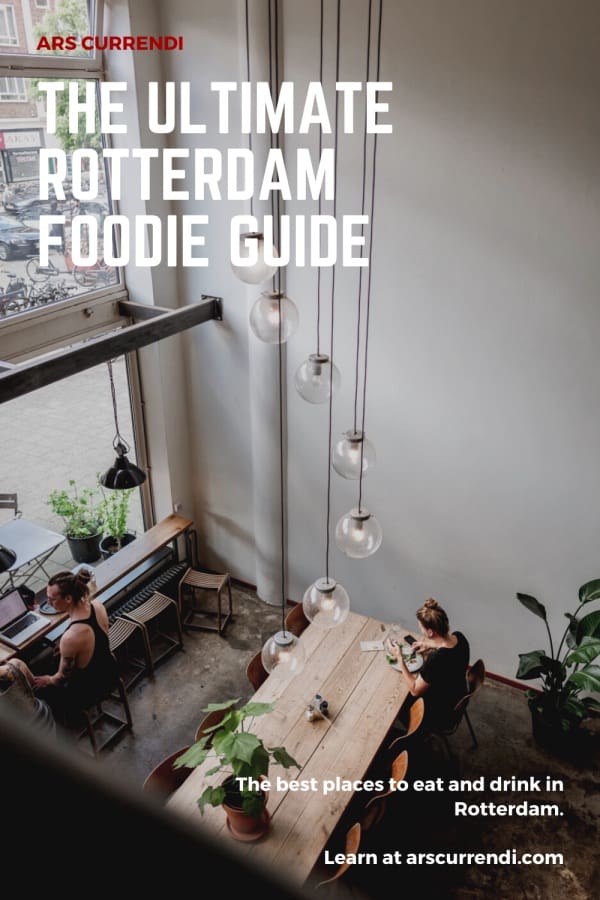
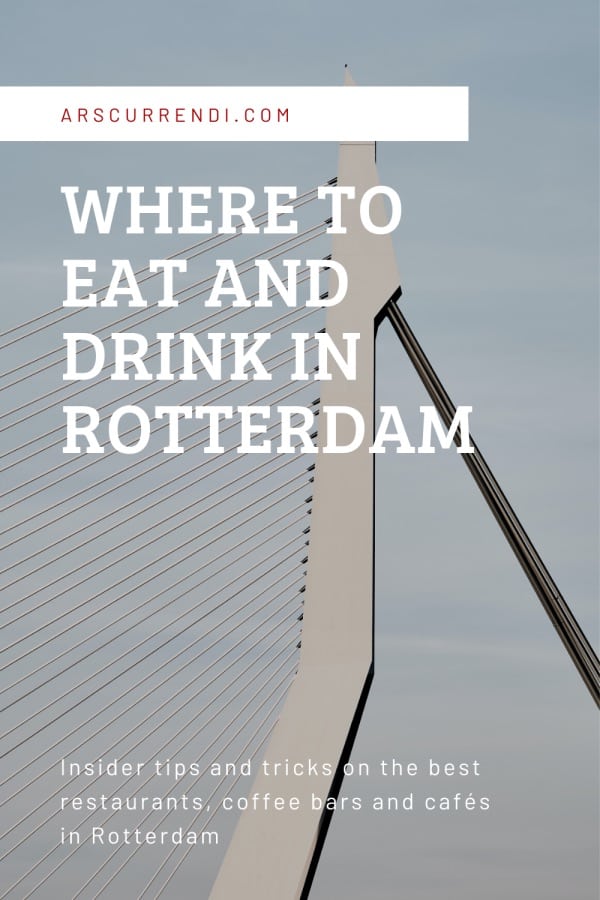
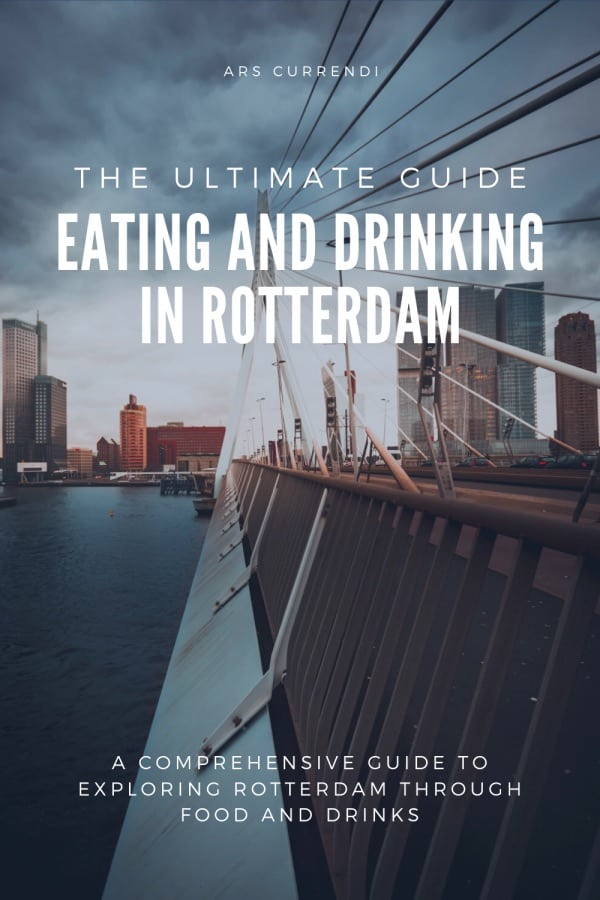
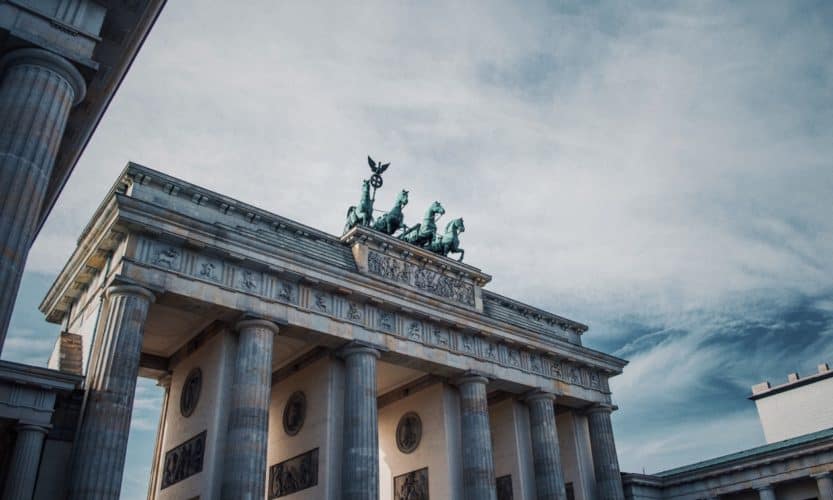
Berlin is the EU’s biggest city and the capital of Germany, and while that may lead you to believe that it will be expensive to visit, nothing is further from the truth. There are plenty of free things to do in Berlin, and I’m here to show them to you.
Before you go any further, take a look at my 3-day Berlin solo itinerary.
Now, let’s take a look at those free Berlin activities!
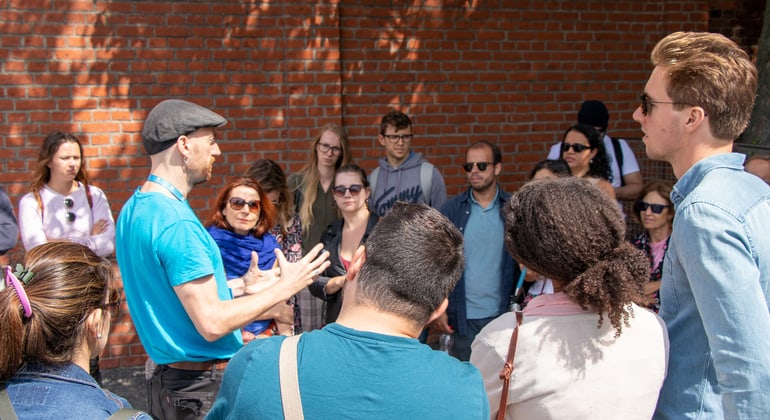
One of my favourite free things to do in Berlin — or in any city, for that matter — is to join a free walking tour.
These tours are usually guided by locals, who will show you things you’ll never find in the guidebooks.
And the best part is, there are so many different kinds of free walking tours in Berlin that you’ll be sure to find something you’re interested in.
Street art? Berlin highlights? Cold War? Whatever it is you’re looking for, chances are you’ll find it in Berlin.
Do keep in mind that free walking tours are often tip-based, meaning that they won’t be completely free.
Tempelhof was Berlin’s main airport until 2008, when it was closed and flights started operating from the city’s other airports, Tegel and Schönefeld, instead.
Today, Tempelhof Field (the runway and its surrounding area) have been converted to a public park where locals go jogging or rollerskating, or even share a picknick on a warm summer day.
More information: Tempelhofer Feld

One of my favourite things to do in Berlin – as in any other city, to be honest – is to find some little-known, abandoned buildings and explore them. And, as you might have guessed, Teufelsberg is one of those.
Related: Why I visited an abandoned children’s hospital in Berlin
Teufelsberg is an abandoned spy station on a man-made hill, which has been turned into a street art sanctuary.
You’ll have to face a little bit of a hike (which took me about 30 minutes) and there’s a small fee (€5,50) to enter the grounds, but it’s more than worth it.
Insider tip: don’t bother trying to find a way to climb the towers and get to the domes. It can’t be done, unless you want to risk your life.
More information: Teufelsberg
If you’re ever looking for free things to do in a new city, a safe bet is always to find a cool neighbourhood and walk around for a few hours.
In Berlin, one of those neighbourhoods is Bergmannkiez, a small area in the southern part of the city with charming cobble-lined streets and unique shops and bars to explore.
Some possible highlights for your visit to this area are the Marheinekeplatz flea market, Another Country bookstore, PICKNWEIGHT vintage kilo store and Marheineke Markthalle.

The East Side Gallery is, without a doubt, one of the most popular and best free things to do in Berlin.
As you may or may not know, the East Side Gallery consists of a series of graffiti murals painted directly on remnants of the Berlin Wall.
Fun fact: with its length of 1,4 km, the East Side Gallery is often considered to be the world’s biggest (and longest-standing) free open-air art gallery.
More information: East Side Gallery
As a city that flawlessly combines historic facades and futuristic buildings, Berlin has plenty of impressive architecture for you to discover.
So why not organise your own self-guided architecture walk?
For the specifics on what to see on your walk, I’ll let Julie from The Gap Year Edit do the talking in her article (linked below).

Yeah, I know. It’s a little out there. When you’re looking for free things to do in and around Berlin, your mind probably doesn’t race to an abandoned children’s hospital.
But you should at least consider it.
I did it when I was travelling solo in Berlin, and it turned out to be one of the most exciting things I did there.
(It was also one of the scariest things I’ve ever done, but let’s not talk about that right now)
Here’s some more information about how I did it, and how you can do it too:
Arts and culture are a very popular area for many cities regarding free things to do. Of course, Berlin is no different.
One of my favourite artsy spots in the city is Urban Spree, a free gallery where exhibitions, workshops, concerts and live events take place.
The exhibitions on display at Urban Spree feature contemporary art by modern artists – both German and international – and usually run for about one month.
More information: Urban Spree

The Holocaust Memorial is one of the most-visited monuments in Berlin, and for good reason.
This elegant installation serves as a humble reminder to the millions of murdered Jews and their suffering in concentration camps in and around Germany during World War II.
Additionally, an underground information centre holds the names of over 3 million Jews who lost their lives in the Holocaust.
More information: Memorial to the Murdered Jews of Europe
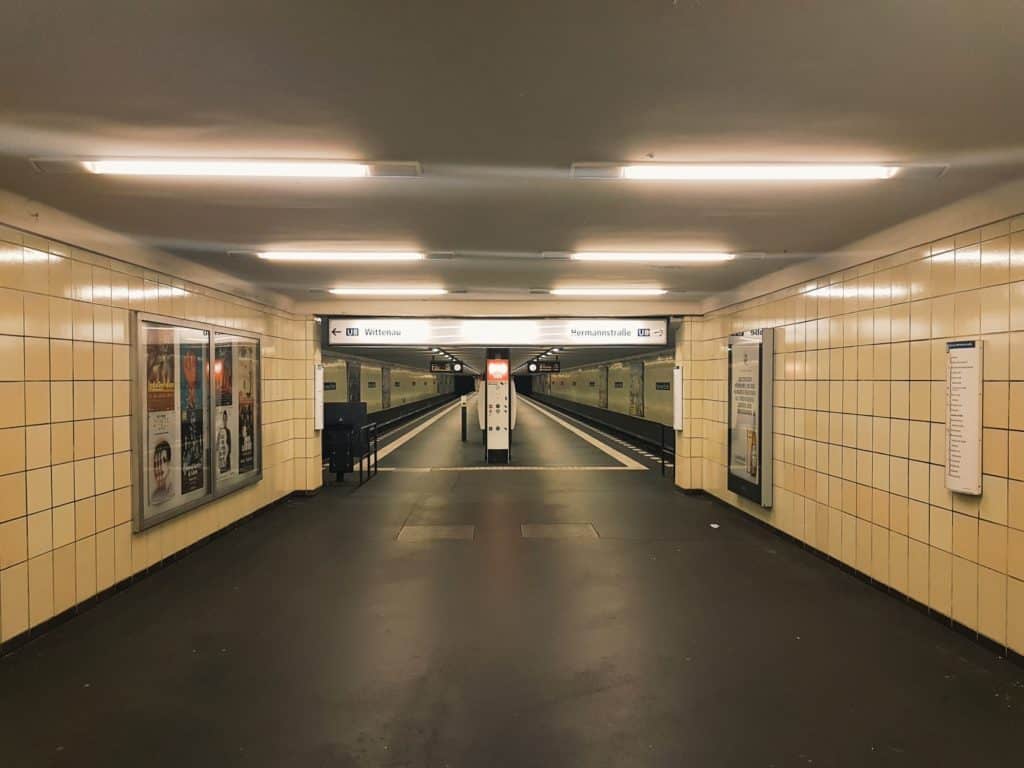
One of my favourite free things to do in any destination is just walking around without having a specific destination in mind.
Let the cobbled streets envelop you, lose yourself in tight alleys and big shopping streets. Take in the atmosphere.
It doesn’t have to be a whole day, either. Just take an hour or two and go where the wind takes you. You’d be surprised at what you’ll discover.
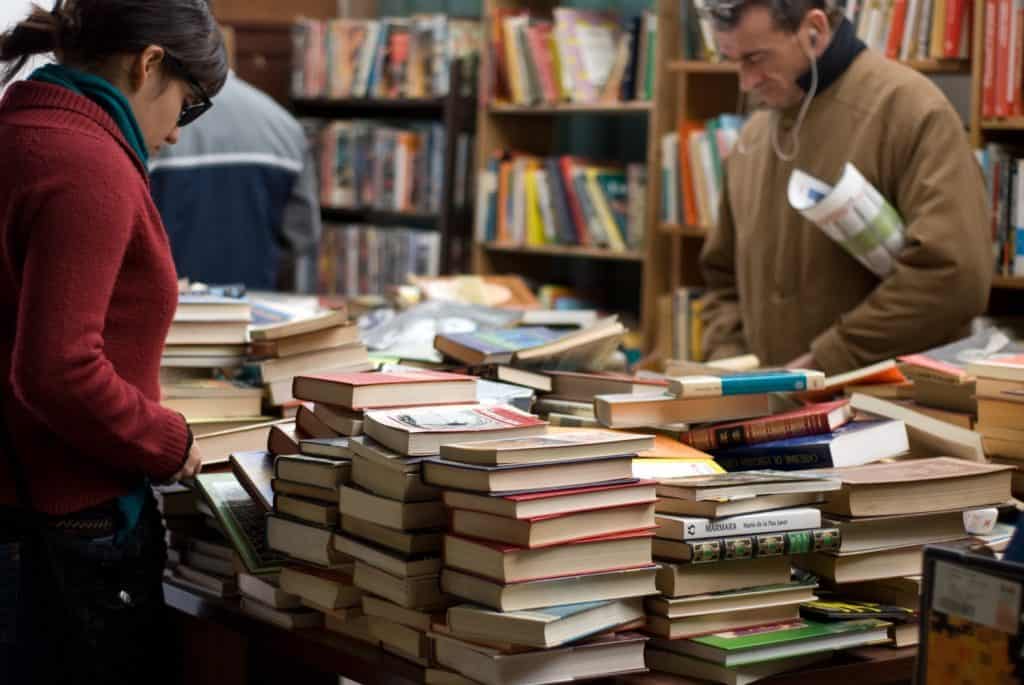
If you’re someone who gets joy out of hunting vintage posters, collecting stamps or hoarding war memorabilia, Berlin really is the place to be.
Since the city’s flea market culture is hardly a secret, you could possibly spend your entire holiday in Berlin browsing its many flea markets.
The biggest and most famous flea market in Berlin is at Mauerpark, but that’s definitely not the only one worth checking out.
Read this article about nine awesome flea markets that aren’t Mauerpark by the people from EXBERLINER.
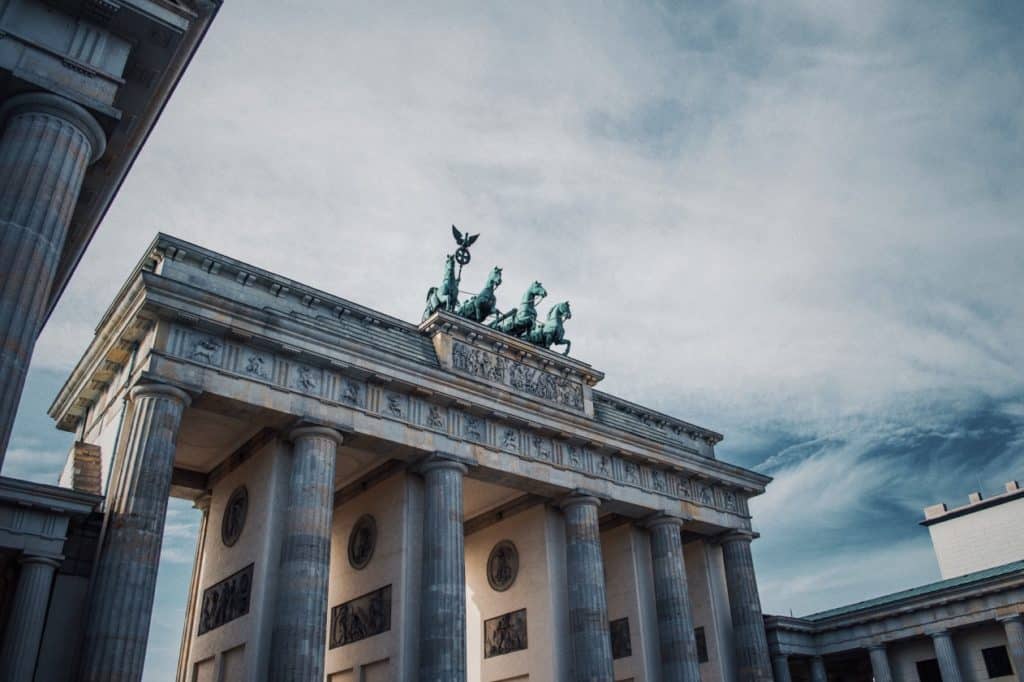
For architecture and history nerds, monuments like the Brandenburg Gate (Brandenburger Tor in German) are a sight to behold.
Constructed in 1791 on the orders of Prussian king Frederick William II, it has been the scenery for many significant events from German history.
Today, the Brandenburg Gate is considered a symbol of both the stormy history of Germany and Europe and unity and peace across the European continent.
More information: Brandenburg Gate
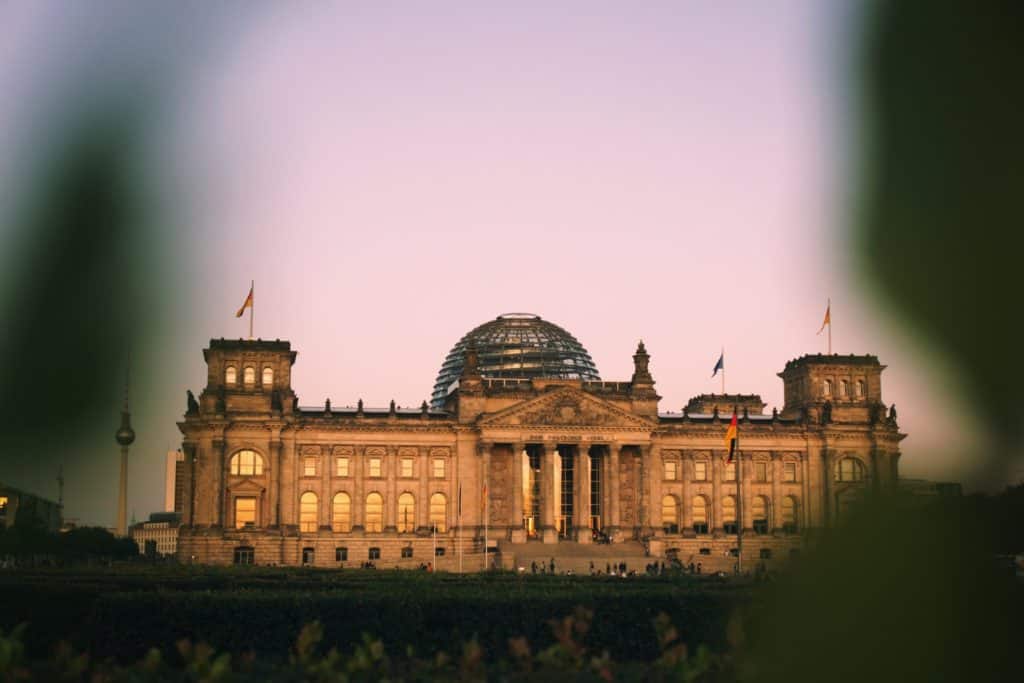
One of the city’s most historically significant buildings is the Reichstag, which has housed the German parliament since 1999.
The building stands steady in the Berlin skyline as a symbol of European and German democracy.
For visitors, one of the most interesting things to do is to climb up to the roof of the Reichstag building and enjoy the free panorama. Keep in mind that you have to register online to climb the building. (But it’s completely free!)
More information: Reichstag Building
Berlin’s Museum Island (Museumsinsel in German) is home to five museums, where you can find impressive collections besides the eye-catching exteriors of the buildings.
Unfortunately, you’ll need to purchase a ticket to actually get into the museums, but you can freely walk around Museum Island without a ticket.
One ticket costs €19 (€9,50 for reduced price tickets) and will get you into the following museums:
More information: Museum Island
Given its status as one of the most-visited war-related places in Berlin, Topography of Terror is definitely a documentation centre worth visiting.
The aptly-named Topographie des Terrors exhibition serves as a humble reminder to the terrors of the Second World War, including information about the Gestapo, the SS and the Reich Security Main Office.
Admission to the site is free and every exhibition is fully accessible for people who use wheelchairs.
More information: Topographie des Terrors
Note: the information in this post is loosely based on a Twitter thread with free things to do in Berlin that I made last year, just after I came back from my own trip to Berlin.
PIN IT!
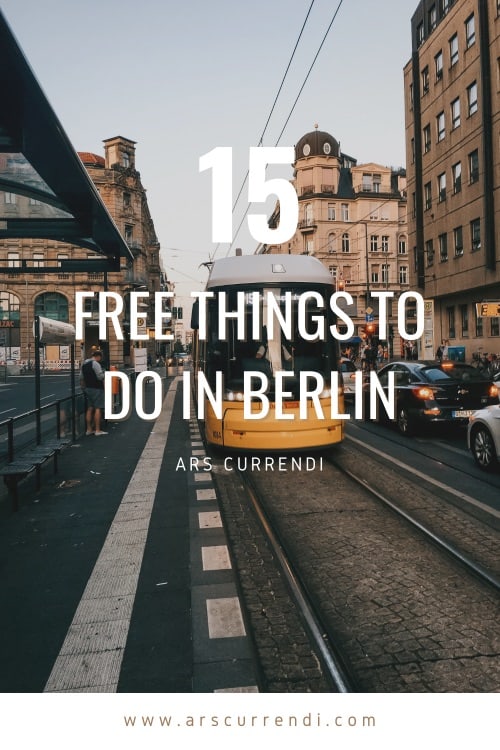
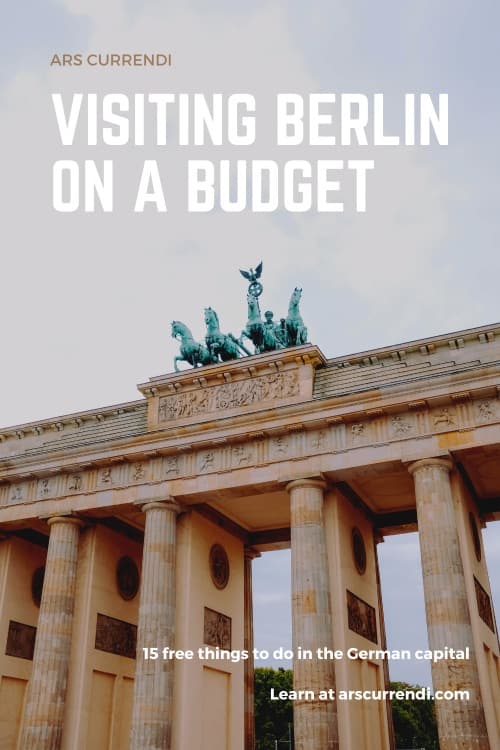
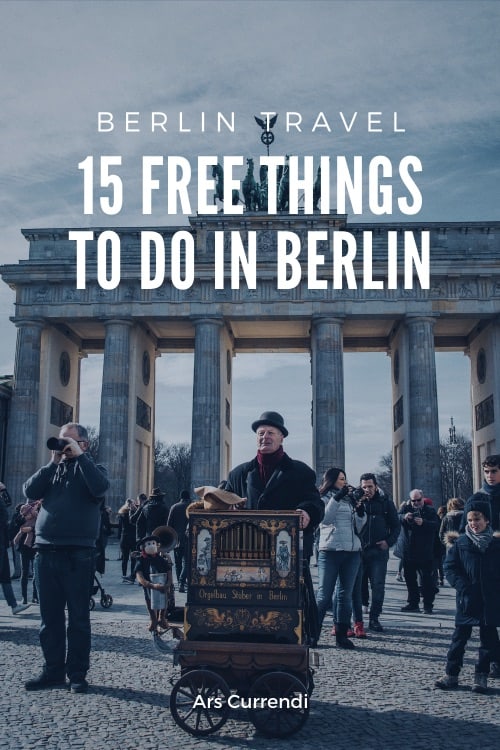
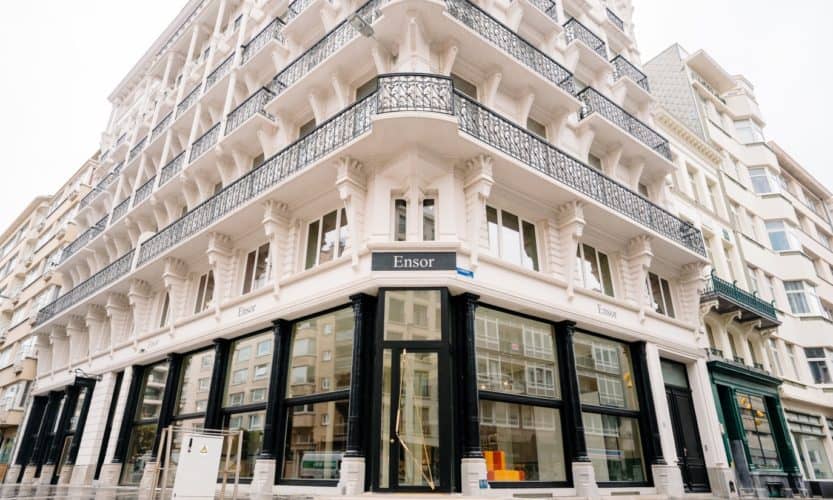
Recently, the James Ensor House in Ostend officially reopened its doors to the public in a fully renewed experience centre. This wholly refurbished experience will shed new light on James Ensor’s life, his artworks and his love for the city where he lived until he passed away: Ostend.
In the interest of discovering your own country, I decided to visit this new James Ensor House. In this post, you will read everything about my experiences; the good, the bad and the ugly.
Spoiler alert: there’s a whole lot of good and almost no bad or ugly.
Skip ahead:
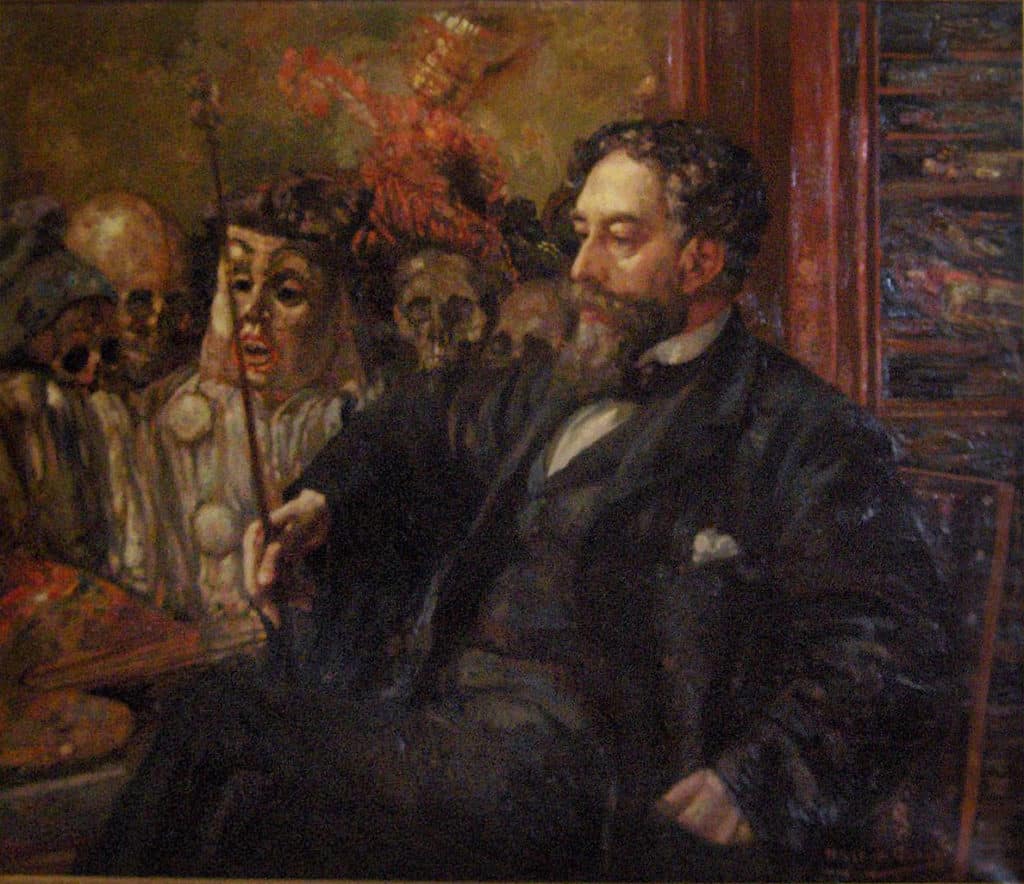
Since I know you didn’t come here for a history lesson, I’ll just give you the quick summary.
James Ensor was born in 1860 to English parents. He initially studied engineering, but quickly lost interest and left school at the age of 15 to pursue his passion for art. Eventually, he would go on to study at the Académie Royale des Beaux-Arts in Brussels, but he didn’t care for the rules and conventions of the Academy.
After leaving the Academy in 1880, Ensor started using the attic of his parents’ house as his art studio. In his artwork, nothing is off-limits – Ensor made his own rules. Critics regarded much of his work at this time as scandalous.
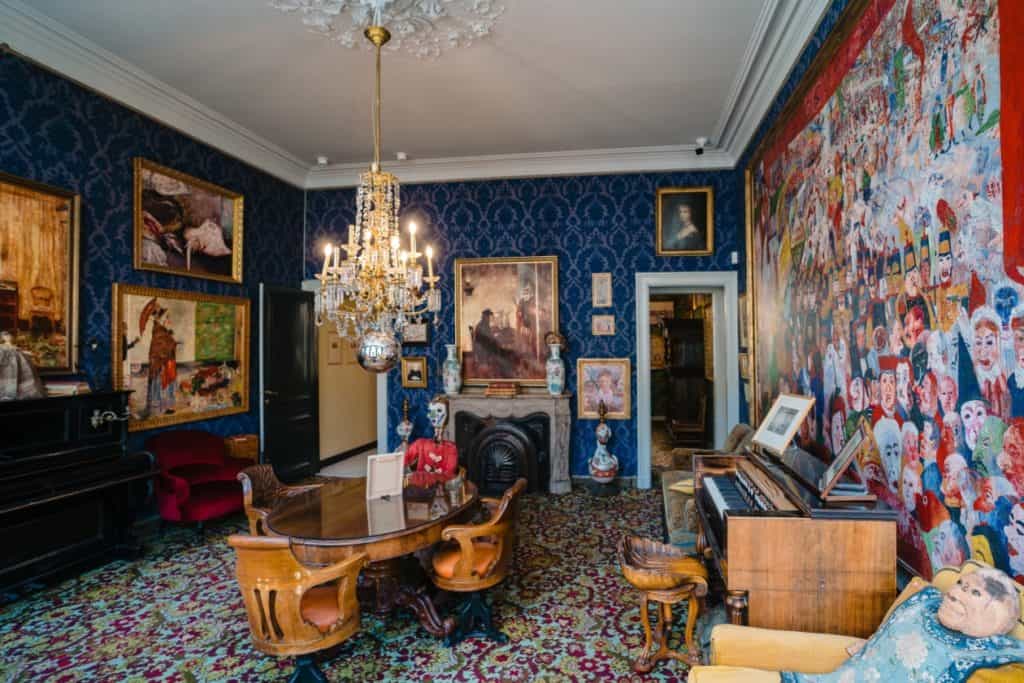
In 1888, Ensor painted his most famous work of art: Christ’s Entry into Brussels in 1889.
Ensor died, unmarried, at the age of 89 in Ostend.
Today, his works of art are on display in many leading museums around the world, including the Rijksmuseum (Amsterdam), the Musée du Louvre (Paris), the Museum of Modern Art (New York) and the J. Paul Getty Museum (Los Angeles).
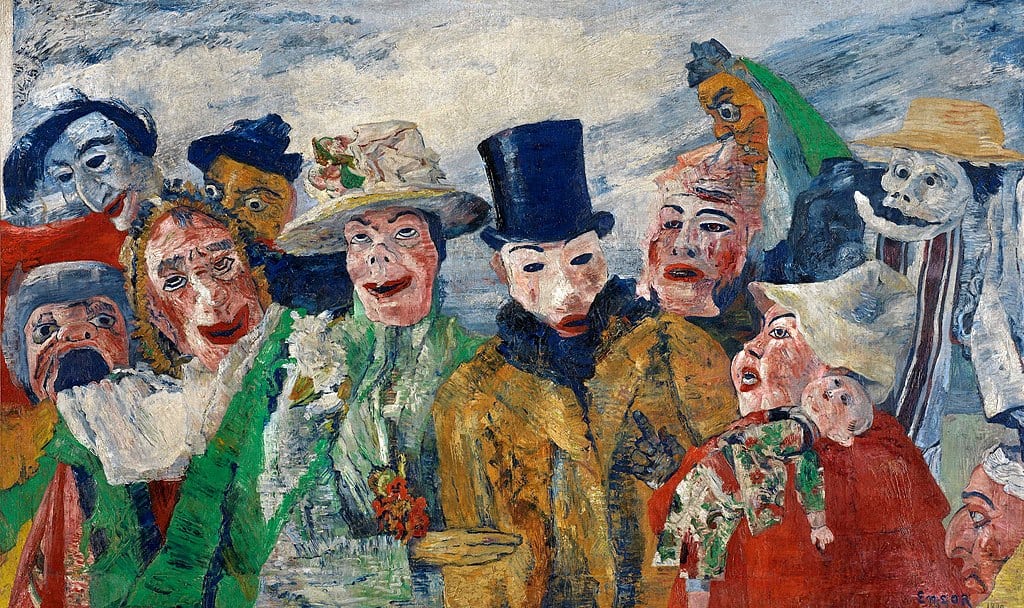
Ensor’s paintings are easy to recognise by the depiction of skeletons, carnivals, puppetry and masks (which were inspired by the masks sold in his mother’s gift shop).
These works of art can best be described as eccentric and rebellious, a perfect representation of his life in and of itself. Through his art, Ensor criticised the establishment and expressed his outrage at concepts like hypocrisy, abuse of power and injustice.
In the late 19th century, Ensor eventually came into his most creative period. Although he was an atheist, Ensor often referred to and resonated with the suffering of Christ in his paintings.
James Ensor was, and for many remains to be, one of the unsung heroes of modern art. He was one of the driving forces behind artistic styles such as expressionism and surrealism.
If you call the James Ensor House a museum, I guarantee that you’ll get a few dirty looks from the people who work there.
I’m just saying.
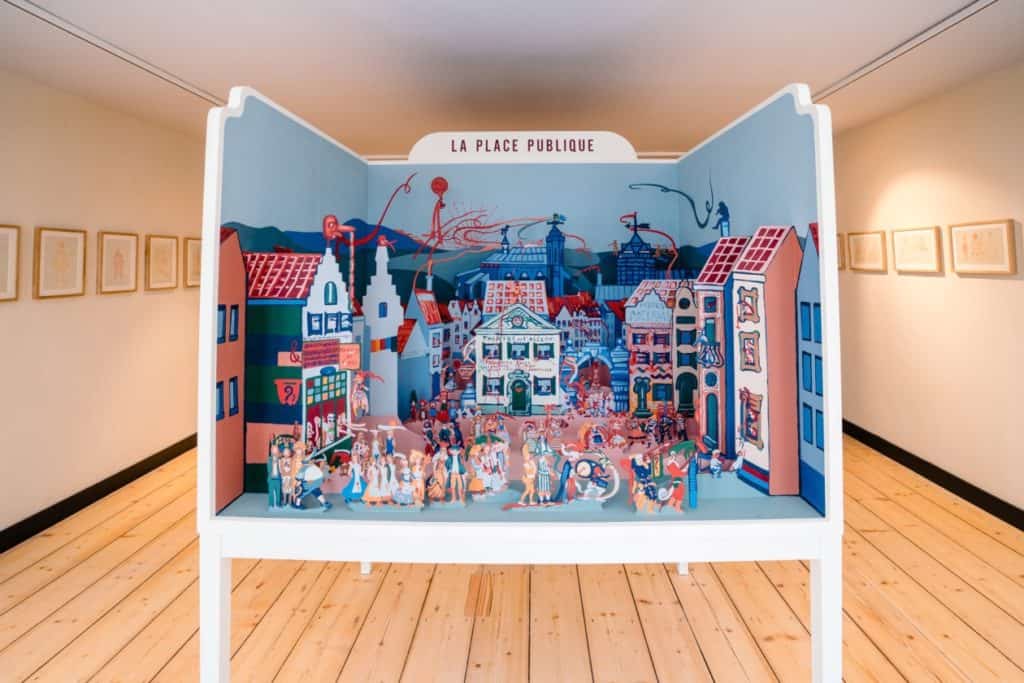
The new James Ensor House is an interactive experience centre where you can learn about Ensor’s life in a new and exciting way.
Originally, the Ensor Museum was a small museum dedicated to the artworks of James Ensor, but a recent renovation and purchase of the neighbouring building gave this place a major upgrade.
Today, a tailor-made audio guide walks you through five rooms in the James Ensor House, each one dedicated to one specific aspect of Ensor’s life and art. Also included are accurate reconstructions of the house where Ensor lived most of his life, with authentic furniture and artworks.
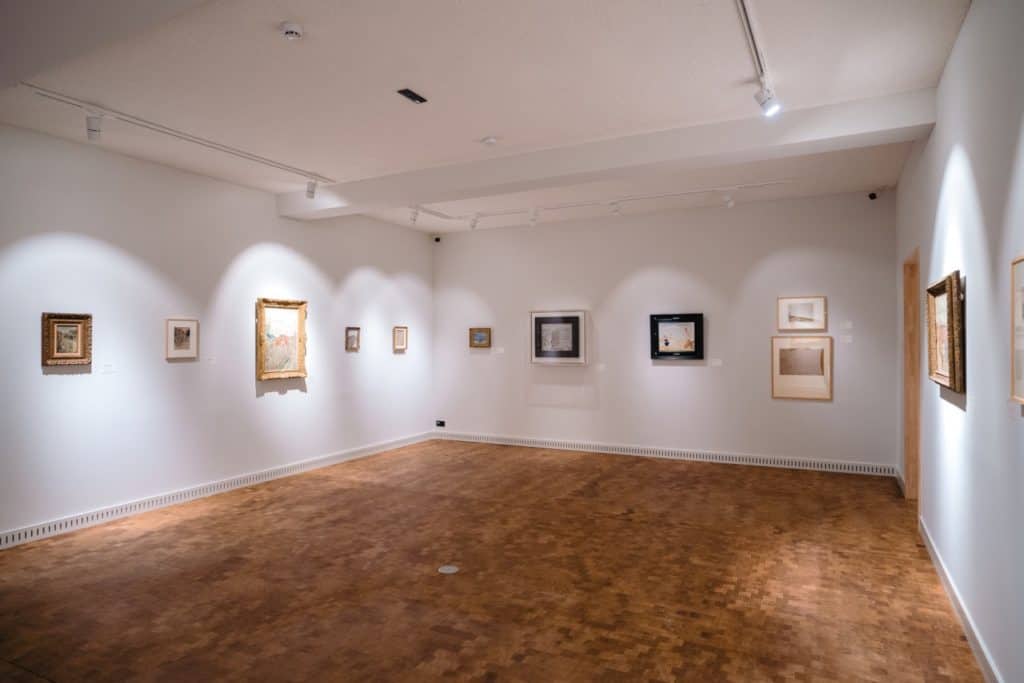
Your visit comes to an end in the museum itself, where real works of art painted or sketched by Ensor are on display.
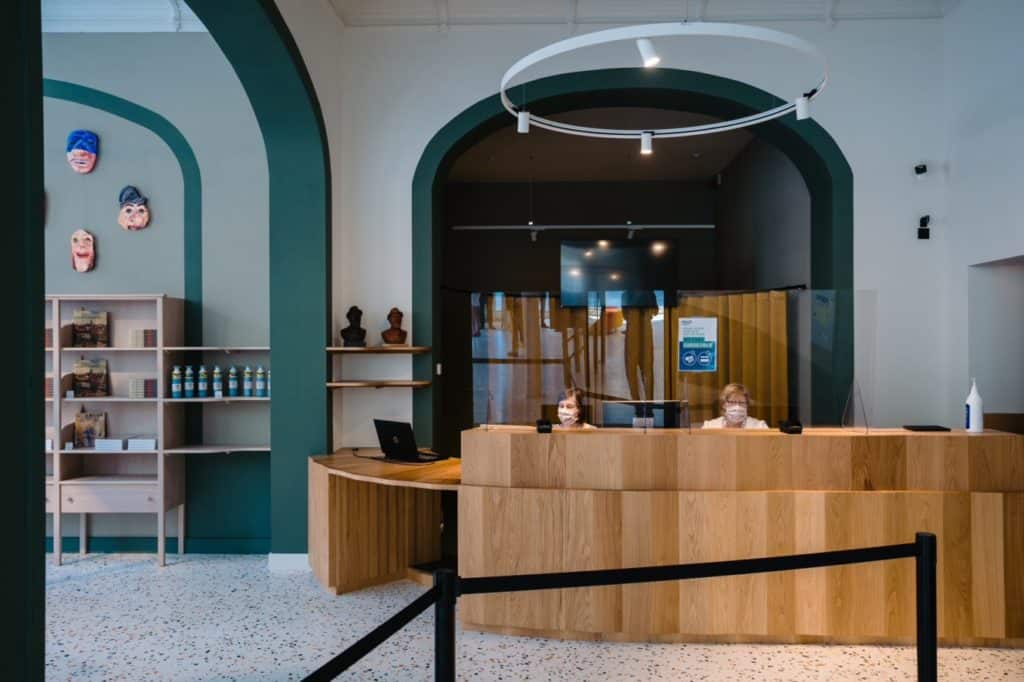
There are a few different ways to get to the James Ensor House:
If you’re not coming by train or by car, pop the following address into your favourite navigation app and follow the directions.
Vlaanderenstraat 29, 8400 Oostende
Since James Ensor spent most of his life living in Ostend, it should come as no surprise that the city decided to highlight this artist with other initiatives than the James Ensor House.
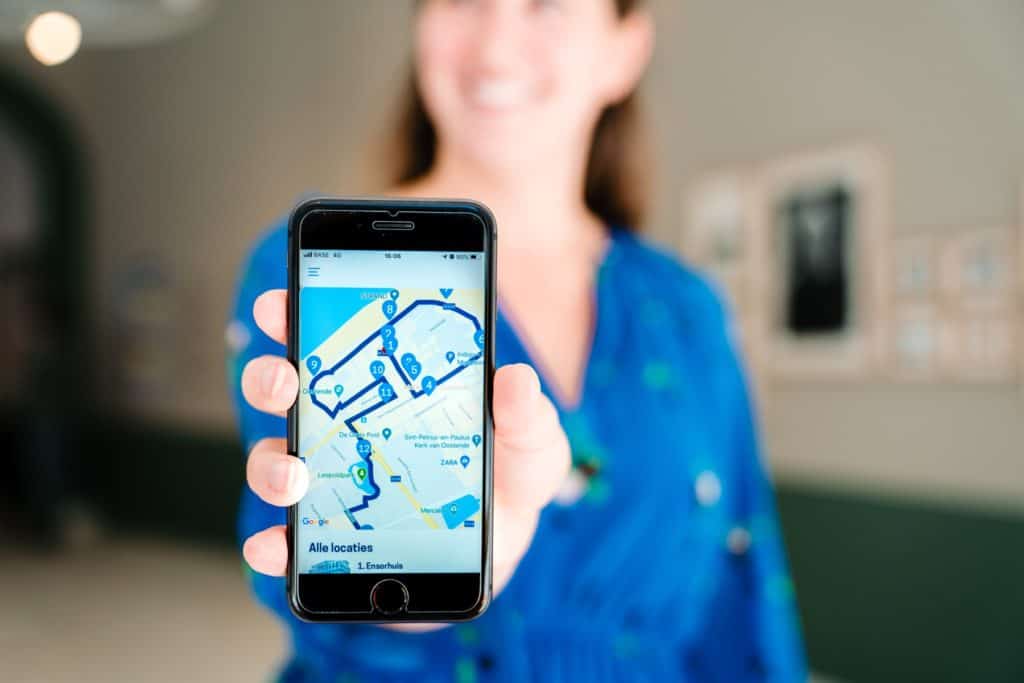
Along with the opening of the James Ensor House, Visit Oostende developed a brand new Ensor-themed walk that takes you to all the locations that played a major role in the artist’s life.
The app that accompanies this walk enables visitors to see the City by the Sea through Ensor’s eyes.
The tour is guided by Ensor himself, who talks about his own tumultuous life, his many friends and the city that stole his heart.
Best of all: the tour is free for anyone who purchased a ticket to the James Ensor House. However, if you only want to do the tour, you’ll have to pay a one-time fee of €5,49.
The app is available in five languages (English, Dutch, French, German and Spanish) and is free to download in the App Store.
Related: The 20 best apps for solo travellers
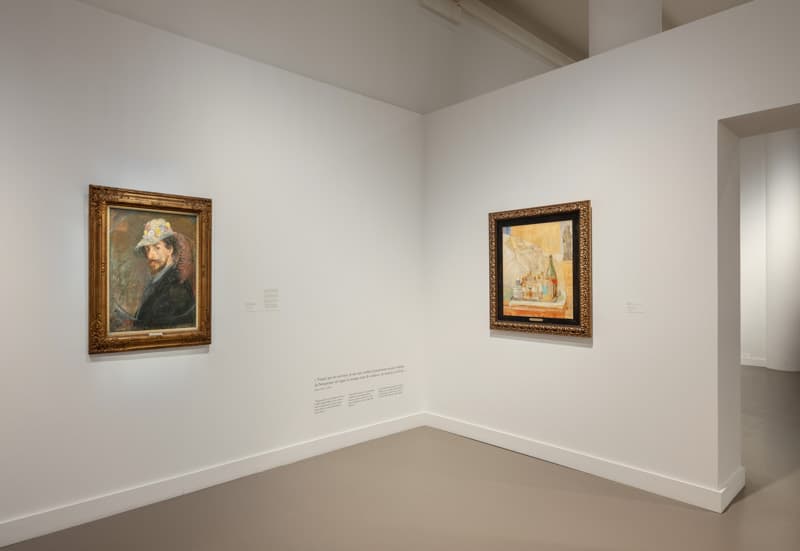
Mu.ZEE (Ostend’s museum of modern art) has an entire wing dedicated to the works of James Ensor and Léon Spilliaert, another renowned painter from Ostend.
The exhibition, which is titled Two Masters of Ostend, aims to let artworks by Ensor and Spilliaert take the visitor back in time, to the Ostend they knew and loved.
Every work of art on display in this exhibition is accompanied by one or more anecdotes, recounting the lives of people like Edgar Allen Poe and Willy Finch.
If you’re still looking for more information for your visit to the new James Ensor House, check out these websites:
PIN IT!
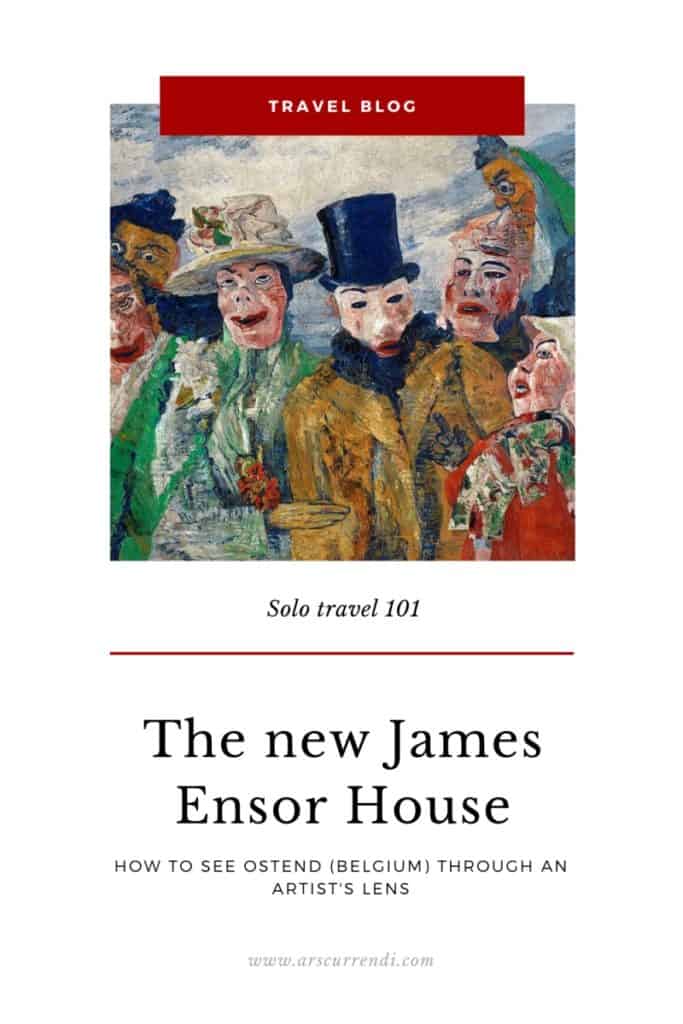


Image credits:

It’s a scary thing to head off on your next big adventure with a group of strangers. But still: the people who come back from their first group tour and still find themselves among people they don’t know are few and far between.
Today, I will give you some insight into what to expect on your first group tour.
If you’re going on a group tour, you’ll get to share experiences with strangers, which might seem like a very intimidating thing – at first.
However, you’ll have a competent group leader with you, who will take care of nasty situations before you even know they’re there.
Anyway, here are some things you need to know before going on an organised group tour.
Skip ahead with the following links:

Before you can book your first group tour, there are a few things you need to look into.
(FYI: My first group tour was this road trip through Rajasthan)
It’s always in your best interest to pack light, especially if you’re going on a trip where you’ll be travelling between cities.
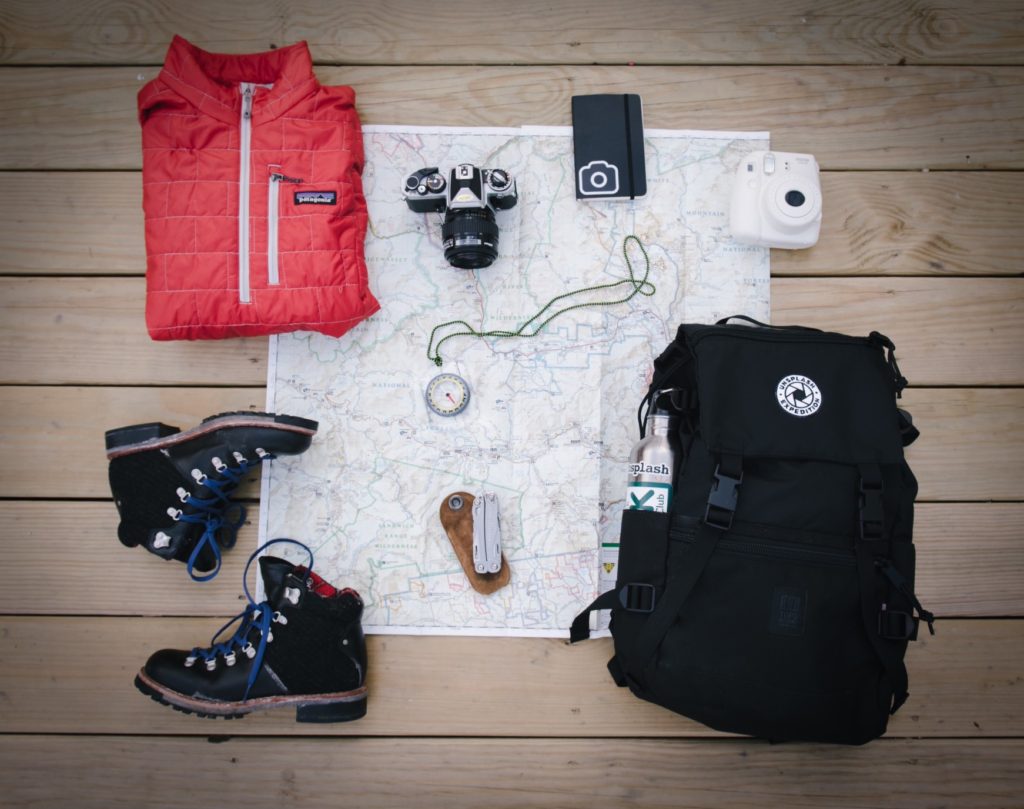
It gives you more manoeuvrability, it’s better for your body and it will make your trip much more pleasant.
And, although it’s not always possible to travel carry-on only, you can still put in some effort to make your checked bag as light as possible.
More detailed guide: How To Pack Light: The Ultimate Guide
First of all, here are some things you shouldn’t pack:
Now, on to some actual tips for packing light:
On a group tour, you usually want to see and do as many things as possible. Inevitably, this also means that you’ll be doing a lot of travelling between places.
Bus, train, subway, rickshaw, …
The sky is the limit when it comes to transportation options.
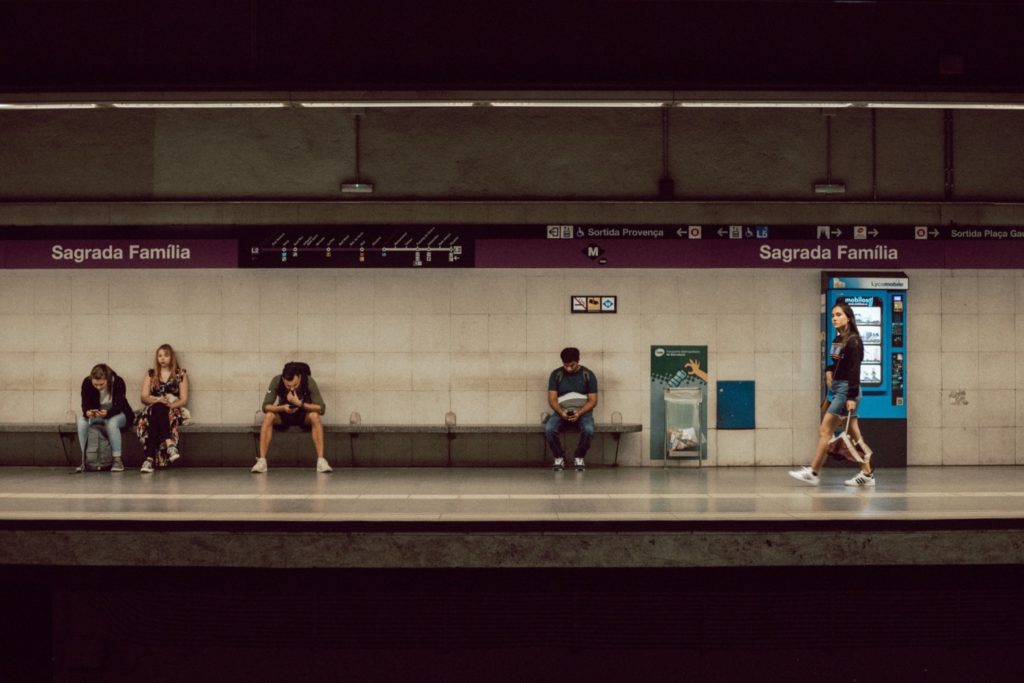
Keep in mind, though, that travel time on a group tour is not necessarily wasted. Since you’re in it together with your whole group, you might as well take this opportunity to get to know your fellow travellers.
After all, why can’t the journey be part of the charm of your trip?
Rules are inherently in place to be followed.
And no, I probably won’t snitch on you if you forget to use your indicator lights once when turning right, but I do believe that the rules are there for a reason.
It’s no different when you’re on a group tour. The rules were created by your touring company to make sure that everyone involved has the best possible experience, and you don’t want to be the one spoiling the fun for everybody.
Just follow the damn rules.
The odds of everybody in your group becoming a friend for life are admittedly quite low. But hey, that’s not an issue. The whole thing with group tours is that, well, you’re in a group.
As long as you can find a few people you can vibe with, you’ll be fine. And, honestly, it’s very unlikely that you’re not going to find anybody with similar interests on a group tour.

Just take the first part of your tour to get to know everyone and find out where the potential friends are, and then spend the rest of your time actually becoming friends.
Check out my tips on making friends as a solo traveller – don’t worry, many of them also apply to group travel.
According to psychological research, most people will behave differently than they usually do when they’re thrown into a new group.
You might be a bit louder, a bit more reserved or a bit more eccentric than you are in everyday life.
That’s why it’s important not to judge people by your first impressions, but rather to wait a few days before you can really find out what you think of them.
Don’t rule out potential friendships because you didn’t like the way the other person acted on day one.
When you’re on a group tour, you often experience extraordinary things. Things you wouldn’t experience at home (like visiting an abandoned children’s hospital or going on a camel safari).
And that’s exactly the reason why your first group tour is the perfect moment to start trying new things.
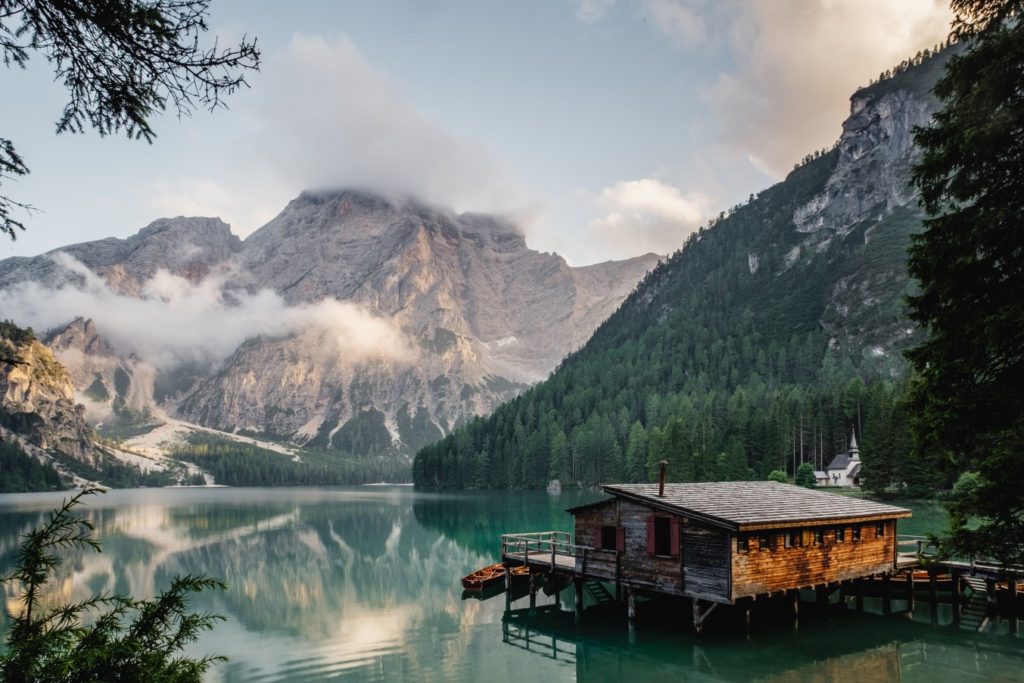
Eating exotic meat? Jumping out of a plane? You might say no to those things when you’re in the safety of your comfort zone, but you should reconsider that answer while you’re abroad.
As I mentioned above, you won’t become BFFs with everyone on your first group tour. Take it from me.
One thing you can do, however, is try to find common ground with the people in your group. The truth is, you probably have more in common than you think.
You picked a certain trip based on the activities, the destination, and a whole array of other factors.
Well, I’m going to let you in on a little secret. Your fellow group members did exactly the same thing.
So the fact that you eventually picked the same trip should already tell you something about the kind of person they are.
And that’s exactly why you automatically have common ground with people on a group tour, even if it might not seem like it at first.
Depending on the organisation behind your trip, some things may or may not be included in the price of your group tour.
Usually, tour operators include things like local transport and accommodation in the price you pay for the trip and recommend you set apart a certain amount of money for things like food, drinks, activities and entrance fees.

Before you book your group tour, make sure you know what you’re paying for upfront and what you’ll still have to pay on the trip itself.
On a group tour, it’s not uncommon for the people who are travelling together to become a tightly-knit group in a short amount of time.
And, very often, reunion plans are already being made while you’re still together.
But unfortunately, those plans too often end up being the furthest you will get, unless there’s somebody in your group willing to put in the effort of getting everyone together again.
You could be that person for your group. I’m just saying.
But still – especially if you’re on a group tour with people from all around the world – you need to be prepared to say goodbye for real when the trip comes to an end.
Now that you know as much about the pros and cons of group tours as I do, you’re more than ready to book one for yourself.
Is there anything you’re still unsure about? Be sure to let me know in a comment or email me and I’ll get back to you as quickly as possible!
PIN IT!
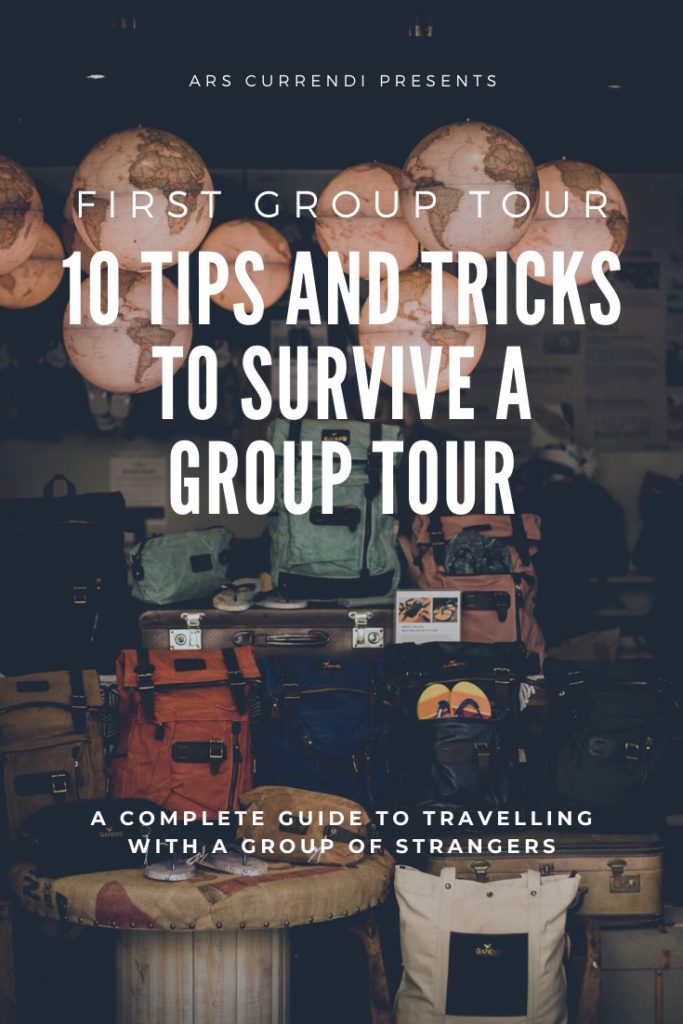
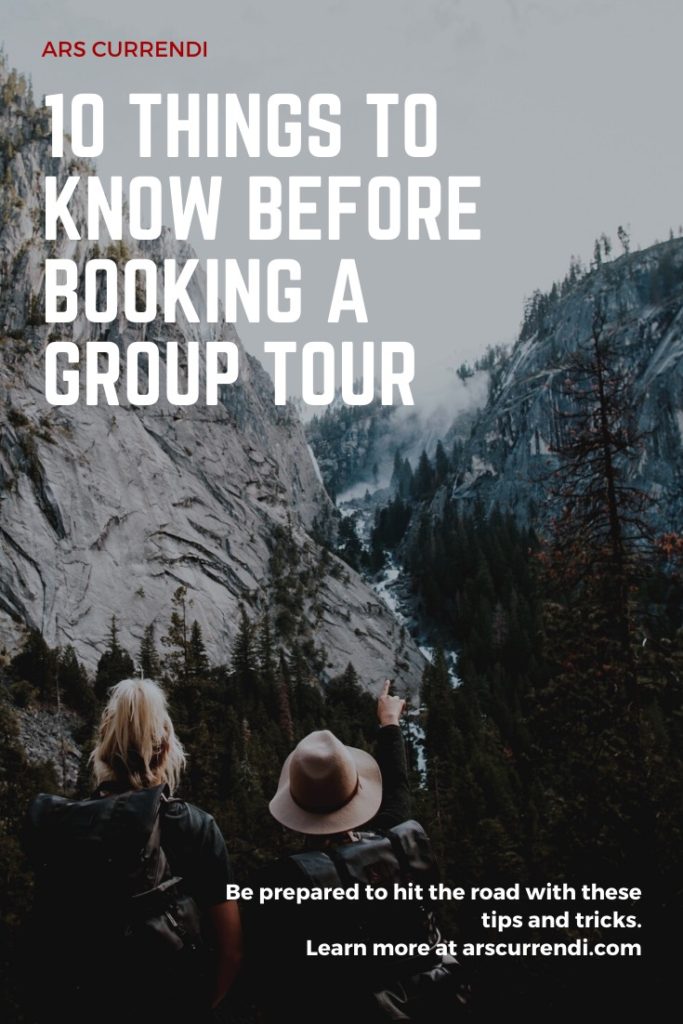


So you’ve decided you want to go on your first solo trip. Congratulations! You’ve taken the first step in the process of getting to the life-changing experience of being out on the road in a foreign country – all by yourself.
Does that sound daunting? Don’t worry. It’s nowhere near as difficult as you’re probably imagining it will be.
Before you go any further, this post is also available as an easily digestible email course. If you’re interested in that, drop your name and email in the form below and you’ll get the course, free of charge.
I was terrified before I boarded my plane on my first solo trip to Dublin. Since then, I’ve travelled to Malta and met some amazing people, I’ve slept in a sanctuary on a cliff, and I visited Berlin earlier this year (Berlin is a great city for solo travellers, by the way!)
Here are some things you’ll need to follow along with this post and actually plan your first solo trip:
If you do these ten things before your first solo trip, you’ll go in with the utmost confidence and you’ll rock that trip like the Foo Fighters rocking Wembley Stadium.
Skip ahead:
The most important thing to do before you can start dreaming about your perfect solo trip is to decide which destination you want to explore.
Read more:
First of all, think about what kind of travel you want to do. Do you want to go on a city trip? Road trip? Round-the-world trip? Weekend break? Anything is possible, especially when you’re travelling solo.
The only limit is your imagination.
The type of travel you’re going to pursue will have a direct influence on which destination you’ll be travelling to. After all, it doesn’t make much sense to take a ten-hour flight just for a weekend trip, does it?
It’s easier to travel somewhere close to home for your first solo trip, but if you’re feeling adventurous, you could always try a big trip overseas. I’m not going to be the one to stop you.
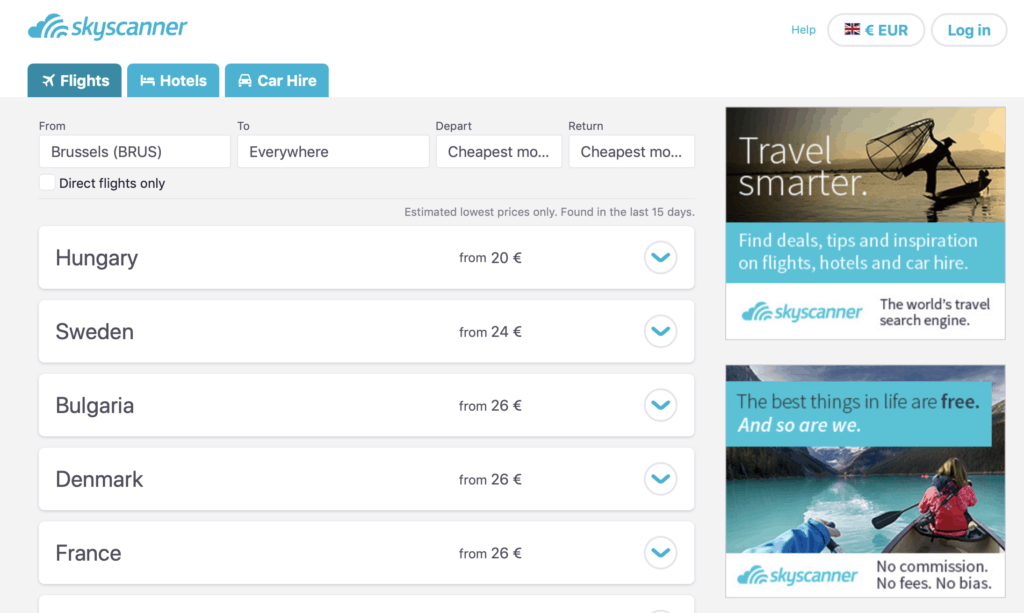
One thing I like to do when I’m feeling the wanderlust but I don’t have any specific destination in mind is head over to Skyscanner, enter my home airport and destination ‘Everywhere’ and select ‘Cheapest month’. This will give you a great list of cheap destinations you can fly to that you might not have thought of otherwise.
A great alternative to this search is Kayak’s Explore option. It does the same thing as entering ‘Everywhere’ in Skyscanner, but it also shows the destinations on a map.
After entering your home airport, select ‘Anytime’ and ‘Any Duration’ if you’re flexible on dates (which you should be if you want cheap flights).
In Kayak Explore, you can also enter a maximum flight time and budget, which is great for shorter trips where you can’t be bothered to take a long-haul flight (like your first time travelling solo – see where I’m going with this?).
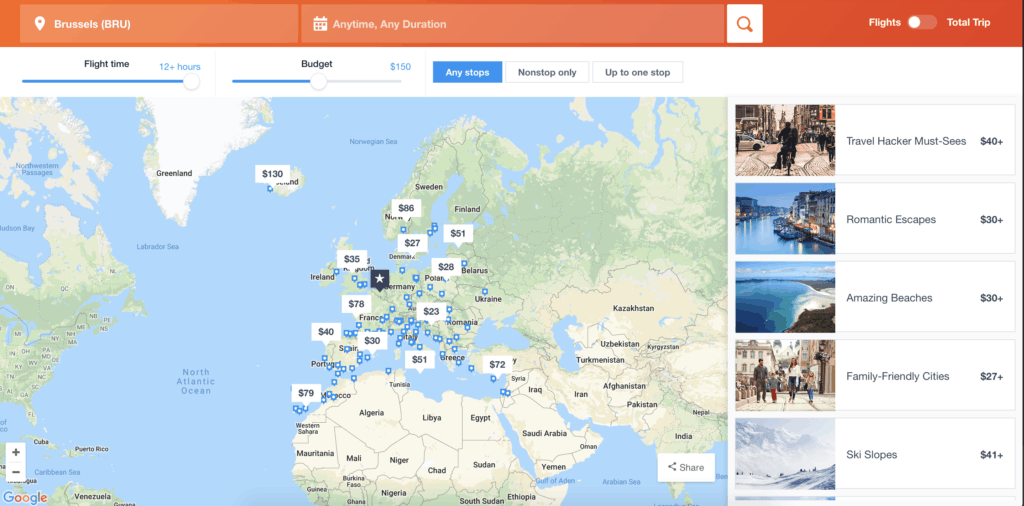
Starting from these tools, write down a list of destinations within your budget that seem interesting for your first solo trip.
From this list, you can select a few destinations and do some more thorough research into what you can do there and when flights are the cheapest.
If you’re going to a destination that is close to home, please consider going by bus or train instead of flying there. You won’t have to be at the airport for hours, it’s more adventurous and it’s a lot better for the environment.
Once you’ve got your destination all figured out, continue reading.
The best way to start getting used to being alone in foreign environments is to just do it. Start travelling to nearby destinations, but do it alone.
One of the most important things to do before your first solo trip is to make sure you’re ready for it. There’s no official solo traveller’s pledge that says you have to go into this with no idea what you’re doing.
And that’s where practice trips come in handy. If you can spend a day by yourself in a city in your country or state, surely you can spend a few days in a foreign city, right?
Practice trips like these will help you become a more confident solo traveller and give you the energy and courage you need to take the leap.
Besides, practice trips like this will let you explore your own country and give you a sense of adventure without breaking the bank.
Talk about a win-win.
This is arguably the most important thing you can do to prepare for travelling alone. If you’re constantly craving someone to talk to or someone to walk beside you, you’re not ready to board a plane by yourself.
You need to be comfortable being by yourself all day. You need to get over the social stigma that being alone is bad. Being alone doesn’t mean you’re isolated. You need to realise that Jerry Maguire was full of shit when he said ‘You complete me‘ because it implies that you can’t be complete if you’re not with somebody.
If you consciously choose to be alone, there’s nothing miserable about it. And that’s exactly what you’re doing by deciding to travel alone.
Here are some things you can do to start being more comfortable without having anyone you know around:
Once you’re happy and comfortable being by yourself, you’ll never again need to wait until your travel buddies are ready to travel with you.
Once you know where you’re going and you know you’ll be fine on your own, it’s time to start planning your trip.

For your first solo trip, you should plan as much as possible beforehand. But still, be careful not to over-plan. I know it’s confusing, but it’s something you have to get through.
Make sure you at least plan your accommodation for the first night and some activities for the first two days. Anything after that, you can figure out while you’re already at your destination.
Related: How to create the perfect travel itinerary
I said not to over-plan everything so that you still have room for unexpected activities. My personal rule is to leave at least one day free of any plans per week and at least half a day for anything between four days and one week.
When you’re travelling solo, there’s nobody to help you carry your bags at your destination. You have to lug them around all by yourself.
That’s why it’s important that you pack light and reduce the amount of effort it will take for you to get around as much as possible.
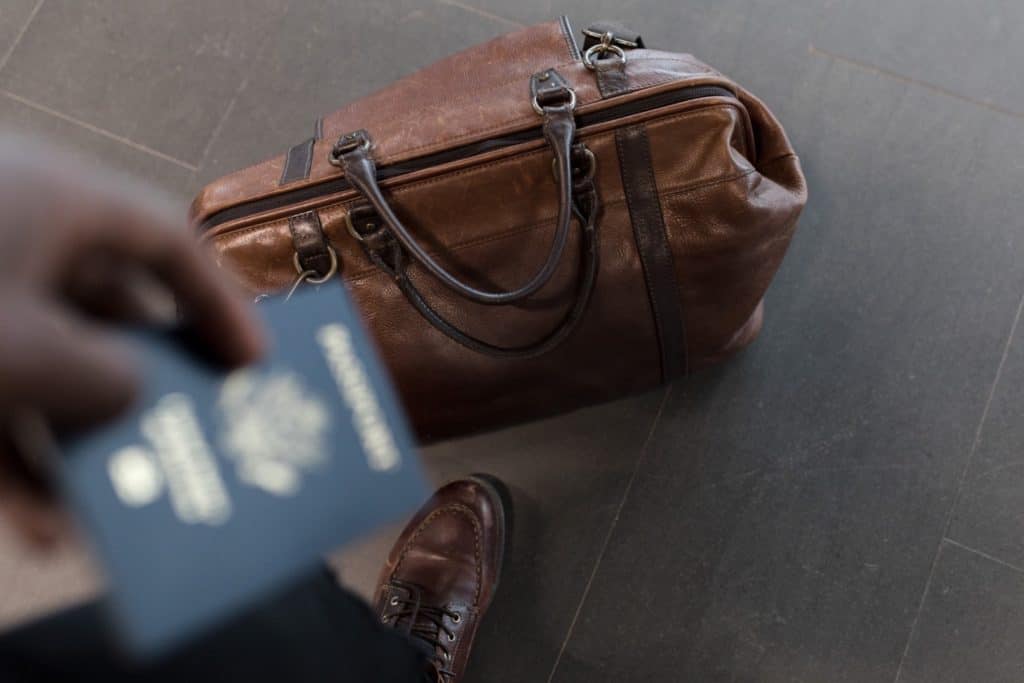
Here are some tips to help you pack lighter as a solo traveller:
As a solo traveller, you’re more prone to robbery than someone who travels with other people and definitely more prone than a local.
There are some things you can do to prevent a stolen wallet from ruining your first solo trip.
Related: Budgeting for solo travel – Tips & tricks to save money
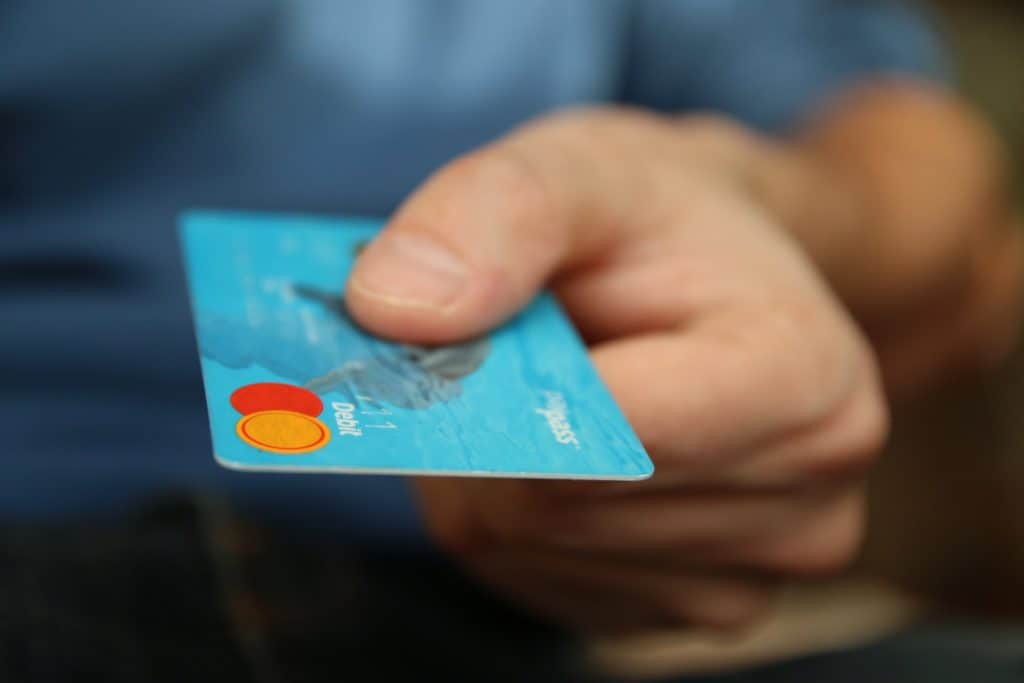
The most important part of this is to make sure that you have several money sources. Just like it’s a good idea to diversify passive income, you need to store your money in different places.
This way, if your wallet does end up being stolen, you still have some money tucked away.
As I just said, phones nowadays can easily replace a lot of bulky things that travellers had to take with them in earlier years. Travel documentation, guidebooks, dictionaries (okay, that one might be a bit of a stretch, but still), and so on.
You no longer need to lug around a crazy amount of paperwork in order to travel. All you need is a smartphone and some apps.

Related: The best free apps for solo travellers
Related: get $35 off your first Airbnb booking by signing up through this link!
These are some of my favourite travel apps:
It’s completely normal for you to feel stressed about your first solo trip. After all, you’ll still be in a foreign location, all by yourself.
There are so many things that you’ll be liberated from as a solo traveller.
Embrace your fears. Deciding to travel alone is the biggest step, and you’ve already taken it. Breathe. You’ll be fine.
I’ve said it before and I’ll say it again: the fact that you’re scared to do this only means you’re doing the right thing. Doesn’t this fear tell you that the memories will be worth the hassle?
This is not a drill.
It’s actually happening. You’re going to travel alone.
From this point on, you get to start telling people you’re a solo traveller. Or, at least, you’re going to be one very soon.
People will try to convince you you not to do it. They’ll come up with every single possible reason not to travel solo.
“You’ll be lonely.”
“It’s expensive.”
The truth is, if you’re prepared for your first solo trip and you’re ready to face all the things that might go wrong, it’s not too dangerous. You won’t be lonely and it won’t be too expensive.
Related: The insider’s guide to solo travel on a budget (free ebook!)
Most of the people who come up with reasons not to travel alone are just trying to protect you from the scary world, of course. But sometimes, you have to stand up for what you want and take the damn leap.
Live your life.
Now it’s getting real.
The day before I leave for the airport, I always have trouble sleeping. I’m just too excited to fall asleep.
If you don’t have this issue, great. Go to sleep and wake up as a solo traveller.
If you do, here are some tips to help you fall asleep.
Also: don’t go to sleep too late. Even if you’ll be travelling all day (read: on a plane, bus or train), it pays off to be well-rested before embarking on your first solo trip.
There.
Admit it: those 10 steps were a lot less difficult than you thought they were going to be, right?
Now that you’ve done all of it, you’re 100% ready to travel by yourself.
There will be things that you’re unable to plan, but that’s okay. It’s a part of the adventure. You’ll look back on this with fond memories and you’ll wish you could go back. And even if you don’t, at least now you know that solo travel is not for you.
I hope this post gave you the courage you needed to finally take the leap and travel solo. If you have any questions, be sure to let me know (send me an email at [email protected]!)
Thanks for reading!
PIN IT!
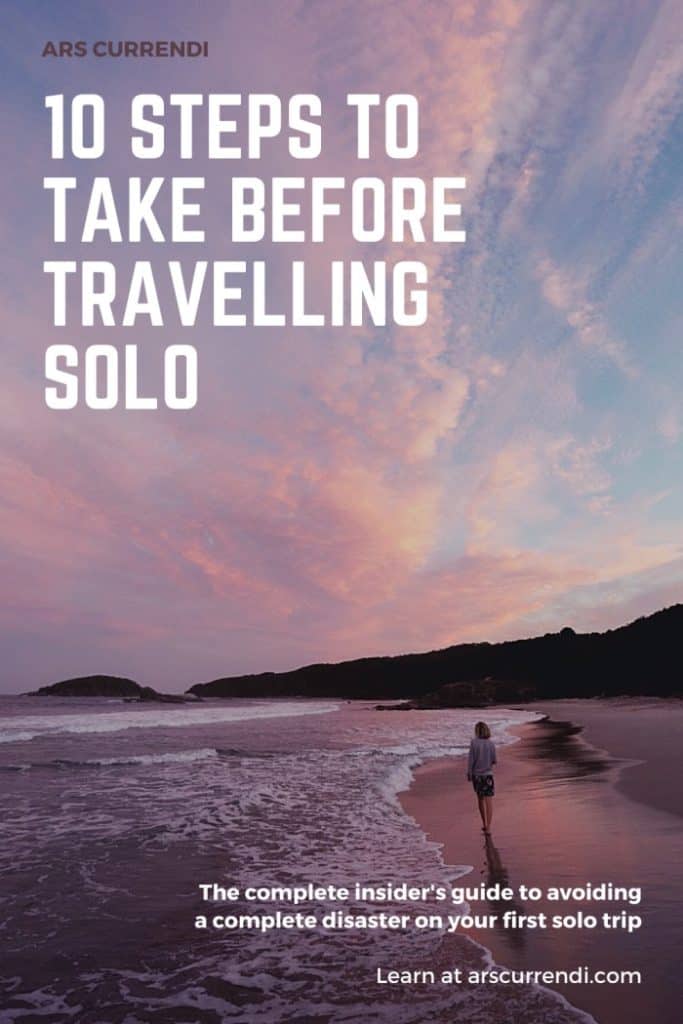
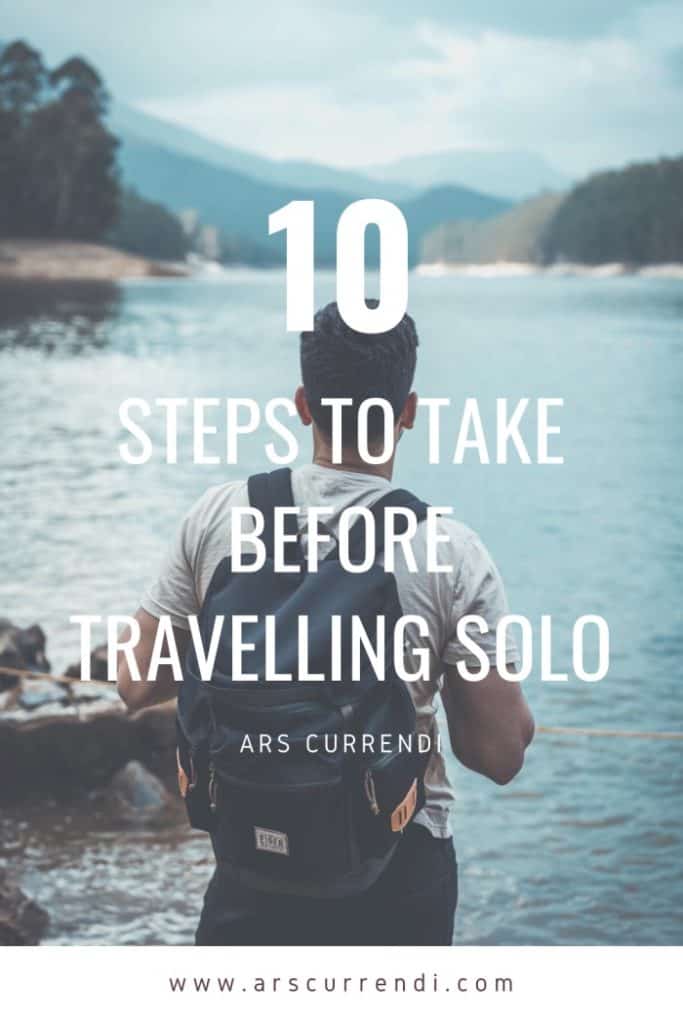
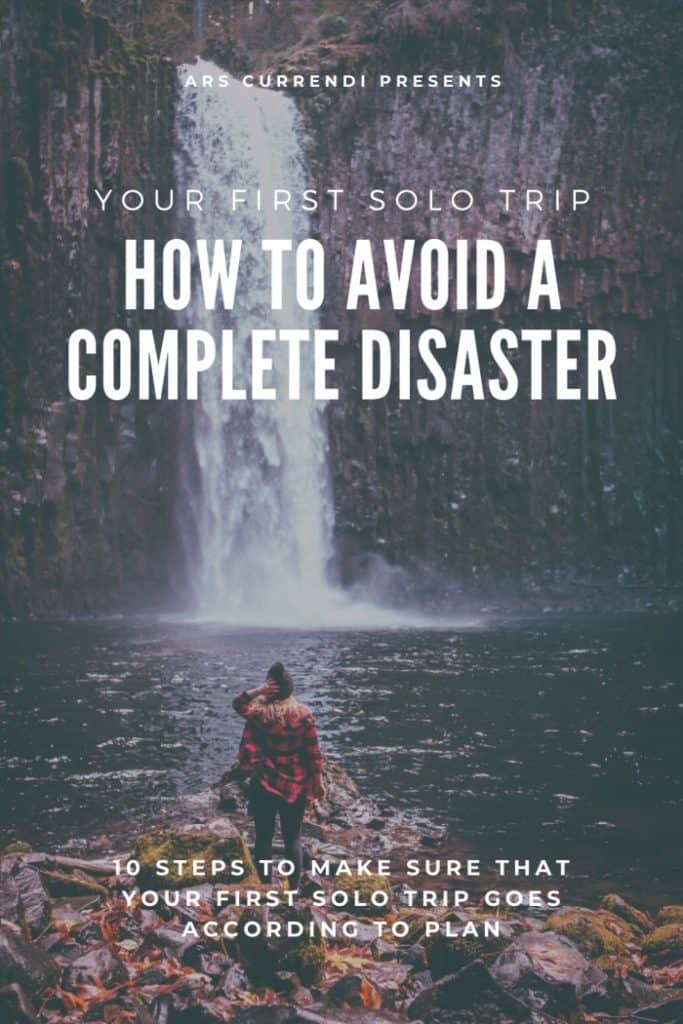
Design by NXNW.